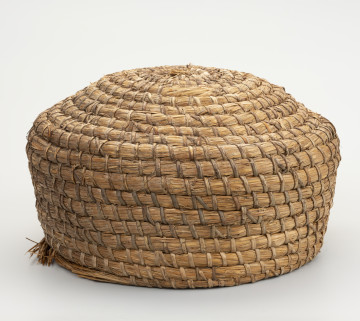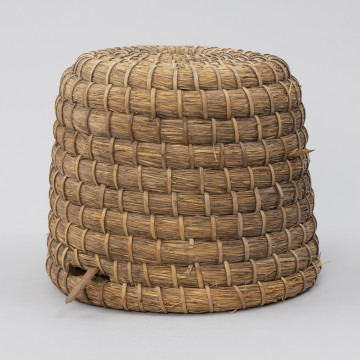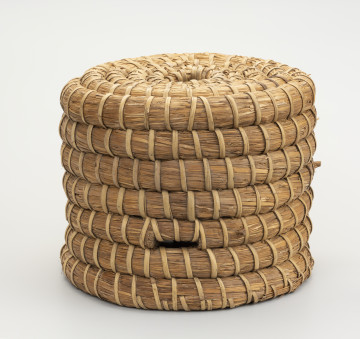
Skep (dome beehive)
1965
National Museum in Szczecin
Part of the collection: Beekeeping
Skeps are dome-shaped beehives, woven in a spiral technique with straw ropes. They arrived in Pomerania with Dutch settlers and were in common use for a long time. Although they may vary slightly in form, the classic, skep shape mimics natural bee nests. The size, on the other hand, may be based on the needs of the hive or plans for apiary development. A distinctive feature of a skep is that there is no bottom, with the substitute being the ground on which they were placed. Straw hives began to be manufactured at the turn of the 17th and 18th centuries. Before that, apiarists (the predecessors of beekeepers) set up forest hives, i.e. hollow chambers specially carved into the trunks of trees to house the bees. Over time, they began to cut out sections of trunks with wild beehives (the so-called logs) and place them near farms. In the second half of the 19th century, the era of modern beekeeping began. The "Warsaw hive" (ul warszawski), composed of two parts and fitted with hive frames, was invented at the end of this century. Beehives of this type are still used today, however, amateur apiaries and organic farms continue to use straw skeps. Today, however, they are not widely used for breeding bees. The featured skep comes from the turn of the 19th and 20th centuries. It is large in size and shaped like a truncated cone, and is one of a dozen or so objects of this type in the ethnographic collection of the National Museum in Szczecin. Agnieszka Słowińska
Author / creator
Object type
beehive
Technique
coiling (weaving)
Material
straw, bast
Origin / acquisition method
donation
Creation time / dating
Creation / finding place
Owner
Muzeum Narodowe w Szczecinie
Identification number
Location / status

1965
National Museum in Szczecin

1890 — 1910
National Museum in Szczecin

1901 — 1920
National Museum in Szczecin
DISCOVER this TOPIC
Museum of King Jan III's Palace at Wilanów
DISCOVER this PATH
Educational path